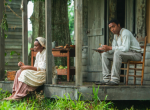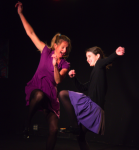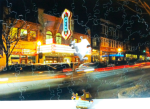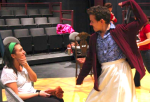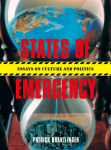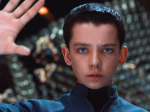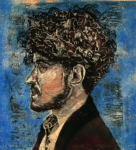▼
Patrick Brantlinger’s “States of Emergency: Essays on Culture and Politics” ◆ by Tom Prasch
Perhaps a reader will realize that Patrick Brantlinger’s States of Emergency is something more than just another editorial writer’s book-gathered plunge into assorted aspects of contemporary crisis near the end of his delightful send-up of the Tea Party in current politics (chapter 3), when Brantlinger offers a Mad Hatter variation on contemporary politics that sounds more Lewis Carroll (and rather more Charles Dickens) than any recent Johnny Deppish incarnation of the character: “MAD HATTER,” Brantlinger shouts. “Treacle for one and all! A treacle well in every tittlebat’s back yard! Let’s end our dependence on foreign treacle—!” Tittlebat, you say? Haven’t seen one of those mentioned since last time I read Pickwick Papers.
But the clues have been there from the outset: in the opening chapter’s allusions to Dickens, Elizabeth Gaskell, and Matthew Arnold (as well as the more predictable presences of Karl Marx and Friedrich Engels) to provide context for a defense of the centrality of class conflict to an understanding of present contestations; or when, in a second chapter critiquing neoliberal economics, Brantlinger does not just quote the familiar Thomas Carlyle line about economics as the “dismal science,” as the average editorialist would, but provides a historical context for the line (in Carlyle’s reaction to Thomas Malthus’s essay on population) and then brings in Dickens again.
Brantlinger is, unmistakably, irretrievably, a Victorianist.
To those already familiar with Brantlinger’s name, this comes as no surprise. He has authored, after all, eight substantial studies of Victorian subjects, from Spirit of Reform: British Literature and Politics, 1832-67 (1977) to, most recently, Taming Cannibals: Race and the Victorians (2011); in addition, he has edited Victorian Studies and chaired IU’s Victorian Studies program and, well, much else. Indeed, his only previous significant meanders away from his home Victorian turf were scarcely meanders at all, but engaging efforts to incorporate theoretical perspectives (accounting for cultural studies in Crusoe’s Footprints [1990]; analyzing the ways in which corporate models of the university, rather than theory-driven revisions of canons, have undermined American education in Who Killed Shakespeare? [2000]), mostly in order to bring those new theories to bear on Victorians.
To those who know Brantlinger only through States of Emergency, this conclusion will become equally evident over the course of the book. After trumping the Tea Party, Brantlinger proceeds to recall John Kenneth Turner’s 1908 visit to Mexico to contextualize his account of the country’s contemporary struggles. He tracks the notion of “waste” back to John Locke and through Adam Smith, Malthus, Carlyle, Marx, and Dickens before turning to a close reading of two turn-of-the-twentieth century figures, Thorstein Veblen and H. G. Wells (and then balancing Wells against contemporary novelist Don DeLillo). He borrows from Carlyle for an epigraph in an essay on the age of “terror” and anchors an account of Australian Aboriginal identity in the country’s colonial Victorian roots. He enriches a discussion of the poverty of today’s veterans with an exploration of the ideas of “surplus population,” from Malthus through early nineteenth-century debates sparked by Marx and “Marcus” forward to Francis Galton and George Bernard Shaw at the century’s end. Whenever Brantlinger needs a contextual hook to illuminate contemporary crises, he reaches first for a Victorian echo of current debates.
Which leads to a simple question: What’s a good Victorianist like Brantlinger doing in a place like this? What might lead him to offer a collection of essays on subjects like the efforts of the World Social Forum (WSF) to redress the inequities of globalization, school shootings, the Iraq War, the lasting legacies of media theorist Marshall McLuhan, and (besides their being an almost irresistible easy target) the Tea Party? There are three basic answers to the question.
First, and most simply, Brantlinger is a Victorianist. He is not a Victorian. He lives now, in this world, and can scarce not respond to it. Indeed, alongside his formal academic career, he has a long record of engagement with contemporary social issues, some of which are directly reflected in the essays in States of Emergency, as in the case of the WSF piece, which draws on Brantlinger’s Global Exchange trip to a WSF meeting in Brazil.
Second, as anyone who knows Brantlinger’s earlier books can attest, his has always been a deeply engaged scholarship; his work, even when focused on the Victorians, has resonance for his own times. He searched for the political meanings in Victorian novels in the wake of the upheavals of the 60s in Spirit of Reform, sought the Victorian roots of more contemporary theories of mass culture (and more contemporary forms of mass culture) in Bread and Circuses (1983), and turned to issues of banking and the state in British fiction during the Reagan/Thatcher years in Fictions of State (1996). And anyone who cannot glimpse the contemporary resonance of his magisterial survey of literature’s collusion in the business of race and empire (in the trilogy of Rule of Darkness [1988], Dark Vanishings [2003], and Taming Cannibals) hasn’t much noticed what world we live in today. States of Emergency thus merely reverses Brantlinger’s usual direction: now finding in the terms of contemporary crises resonance with Victorian debates.
But that final point leads us to the third reason for this collection: if we are truly to understand the multilayered crises of our present condition, the Victorians are where we should begin. After all, if industrial and postindustrial capitalism is at the heart of many of the specific sites where Brantlinger locates contemporary crisis, it’s the Victorians who invented those machines, and the Victorians (across an ideological spectrum from Carlyle to John Stuart Mill to William Morris, with John Ruskin somehow landing on both ends of it) who first theorized about the impact those machines would have on class systems, on the social fabric, on city life, on the forms of culture. And if globalism is Brantlinger’s other central concern, as it shapes first-world/third-world inequalities, the sites of modern war, or the terms of cultural exchange, the shadows of Victorian empire haunt these contemporary formations. Who better, then, than a Victorianist to illuminate the now?
The book offers a dozen essays, divided into two broad sections: “Class Conflicts” and “Postmodern Conditions.” The division is less than firm: Brantlinger’s analysis of class-based conflict informs every one of the essays, and he engages postmodern theory in defending his understanding of class. Still, the terms provide useful organizing principles for the whole, the book’s first half more deeply engaged in the contemporary discourse (or failure of discourse) about class, and its latter half more engaged with postmodernity, above all as one dimension of globalization. Certain deep themes recur throughout the collection, notably: Brantlinger’s critique of neoliberal economics (explicitly derided in the second chapter for its masking of its biases in favor of capitalism through the mystification of mathematics and the sanctification of free trade, but that complicity becomes a leitmotif for the volume); his reflections on the meanings of globalization (which very differently shape, for example, his essays on Mexico’s state of crisis, the Iraq war, and Australian Aborigines’ search for literary voice); his powerfully hopeful search for a road to reform for the crises he himself frames at the outset, following Slavoj Žižek, as apocalyptic (“In an imperfect world, utopianism is a necessity,” Brantlinger insists, in his discussion of the WSF’s agenda); and his constant search for a theoretical ground from which to engage in a critique over such a wide range of topics.
The search for theoretical ground provides an especially rich subtext for this collection; indeed, in some ways, the essays here can be read (if you don’t mind ignoring their actual subjects) as a critical assessment of the range of theories that have been deployed in recent decades to understand society, culture, and literature. Brantlinger’s own theoretical position strikes me as a complexly layered construction, crafted over the full course of his career, with roots in those nineteenth century sages to whom his essays so often revert (most especially, unsurprisingly, Marx), allusions to early twentieth-century thinkers he likely encountered as an undergraduate (Veblen, Emile Durkheim), accretions from the Frankfurt School whose roots were in the interwar era (Walter Benjamin, Theodor Adorno, Max Horkheimer; the figures so central to Brantlinger’s earlier excursion into ideas of mass culture in Bread and Circuses), later strands of Marxist thought (such as hegemonic readings rooted in Antonio Gramsci, or the ideological state apparatus of Louis Althusser), and then forward to the major poststructuralists (Roland Barthes, Michel Foucault, Pierre Bourdieu, Jacques Derrida; Jacques Lacan is, mercifully, absent), to postmodernist thinkers (Frederick Jameson, Jean-François Lyotard, Jean Baudrillard, Gilles Deleuze and Félix Guattari), to the major voices who framed the debates of cultural studies (E. P. Thompson, Richard Hoggart, Raymond Williams; the group of thinkers key to Brantlinger’s earlier Crusoe’s Footprints), to postcolonial theory, and on to contemporary thinkers like Žižek
But this is hardly a haphazard assemblage. Brantlinger critically assesses the values and limits of the varied strands of theory he employs. Of Marx, for example, Brantlinger notes in his opening chapter: “Marx’s prediction that the ultimate outcome of class warfare would be a classless utopia was wrong, but that does not mean he misinterpreted the past.” Brantlinger in the same chapter takes to task postmodernists like Lyotard and Baudrillard for being blind to the continuation of class conflict in the postmodern condition. He later sides with McLuhan against “crash theorists” like Arthur Kroker and Michael Weinstein: “The crash theorists tend to be dismissive of McLuhan as a techno-optimist, utopian, or even cryptotheologian…. but their own brand of apocalyptic postmodernism begs to be read as a continuation of McLuhanism by other means.” Brantlinger’s theoretical grounding thus, like his literary analysis and his political critique, is rooted in close, careful, critical reading of key texts.
The opening section of the book, “Class Conflicts,” begins, foundationally, with Brantlinger’s defense of the idea of class conflict as a means to understand both historical and contemporary struggles. Addressing politicians’ rejection and postmodernists’ dismissal of the term, Brantlinger asserts: “Despite the obfuscations of the mass media, of neoliberal economists, and of some theorists of the postmodern condition, class struggle continues to shape American culture, a fact that the 2007-8 crash has made glaringly obvious.” The second chapter critiques dominant neoliberal economics, above all for its masking of its own ideological biases: “Economists … present the notions that capitalism is the only system that works and that political and social freedoms depend on free markets. These notions are presented as unassailable axioms.” Brantlinger will proceed to assail them. In chapter three, he has fun with the Tea Party, whose partisans he compares to the Know-Nothings of the 1850s. Chapter four offers a detailed cultural-studies take on the Virginia Tech shootings, charted along four axes: “race, class, gender, and America’s ‘gun culture.’” Ranging from Turner’s 1908 visit to Mexico back to the Mexican-American War of 1848 are forward to the emergence of the Zapatistas in the wake of the NAFTA agreement in 1994, the fifth chapter seeks to explain the long-term economic crisis of the Mexican state; for Brantlinger, NAFTA and the Zapatistas constitute “opposed but causally linked outcomes of economic neoliberalism,” rooted in a century and a half of unequal relations between north and south. The section’s final chapter (coauthored with Richard Higgins) evaluates “waste” as the inevitable byproduct of consumer capitalism (existing in “reversible” polarity to wealth). The authors survey the role of waste in a range of economic thought, from John Locke to Marx, before focusing more closely on Veblen and Wells.
The second section, “Postmodern Conditions,” opens with “Shopping on Red Alert,” a brilliant analysis of the discursive role of “terror” in American politics and culture since 9/11 (and contrasting it to the lackluster response to the Katrina disaster). Brantlinger concludes: “Perhaps what is new about terrorism today, apart from the rhetorical hype that sustains it, is its exhaustion—its angry impotence in light of the desire of the vast majority for peace, stability, prosperity, and freedom.” The section’s second essay sarcastically plays the war in Iraq against America’s history of transcontinental subjugation summarized by the phrase Manifest Destiny: “There are very few places in the world that should not be considered for statehood in the United States, and Iraq is not one of them.” The ninth chapter of the collection (like the eleventh) echoes themes Brantlinger explored in his examination of discourses of extinction (typically of “lower” or more “primitive” races) in Dark Vanishings. Examining the range of representations of Aboriginal Australians in recent literature, he highlights the nostalgic primitivism and commodification of aboriginal tropes, considers the interesting problem of “fake” Aboriginal writings, and concludes by calling into question any sort of authenticity as an anchor to identity: “In both racial and literary terms, the stress on authenticity is misleading,” since “a printed text is, in some sense, already inauthentic.” Next, Brantlinger turns to Marshall McLuhan and the technological apocalyptic strands of thought (from postmodernists to GRAIN thinkers to crash theorists) he sees as McLuhan’s heirs. In Brantlinger’s penultimate chapter, he poignantly places the impoverished and all-too-unsupported veterans of recent American wars in the context of previous generations’ use of “exterminist” discourses to justify their inattention to “surplus” populations. Brantlinger closes the collection on an optimist note, contextualizing the work of the WSF in challenging dominant global economic structures, and insisting, against those who would dismiss such aims as utopian: “If ever people everywhere needed to think in utopian terms, it is surely now,” facing the wide range of problems (war, famine, ecological disaster, economic breakdown) that constitute our current “emergencies.”
Brantlinger’s collection is not without flaws. Some of its pieces seem comparatively lightweight (as much fun as it is to satirize the Tea Party, it’s sort of like fishing with dynamite); some seem somewhat out of place (exactly what McLuhan is doing in here is never quite clear). As careful as Brantlinger typically is with his sources, he lets a few writers off too easily (perhaps it is only from Kansas that the deep flaws in Thomas Frank’s thought become apparent, but Brantlinger credits his analysis too easily). As wide-ranging as Brantlinger’s theoretical perspectives are, there are still curious gaps (like the absence of Stuart Hall, whose cultural-studies credentials and strikingly parallel attempt to tangle with Thatcherism in the midst of its deprecations in Hard Road to Renewal [1988] should have recommended his inclusion). And Brantlinger really should get to more movies; Alex Rivera’s Sleep Dealer really belongs in his discussion of Mexican labor issues, and any number of robotic nightmares, from I, Robot to the Terminator series, could illuminate his discussion of “Nanoculture” among McLuhan’s heirs (and both David Cronenberg’s Crash and J. B. Ballard’s source text for that film certainly deserves a place in that chapter as well).
But these are minor quibbles. Overall, Brantlinger’s States of Emergency is a masterful series of excursions into contemporary crises that. The essays both display the deep value the capacity of cultural studies to come terms with contemporary issues and reveal how understanding the Victorian roots of today’s culture can illuminate our present conditions. Deeply researched (with full footnotes and bibliography), carefully thought out, and eloquently argued, they offer a refreshing relief from the babble of mainstream social and political commentary, and a source of hopeful vision against the varied voices of apocalypse.
The Ryder ● December 2013
▲

